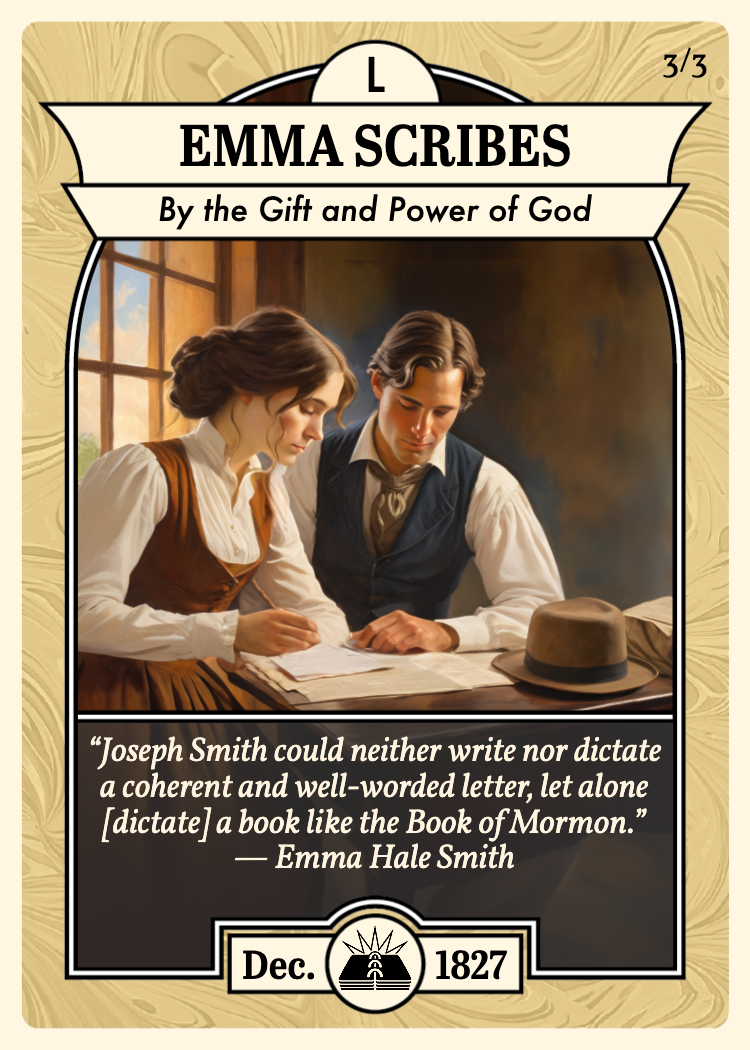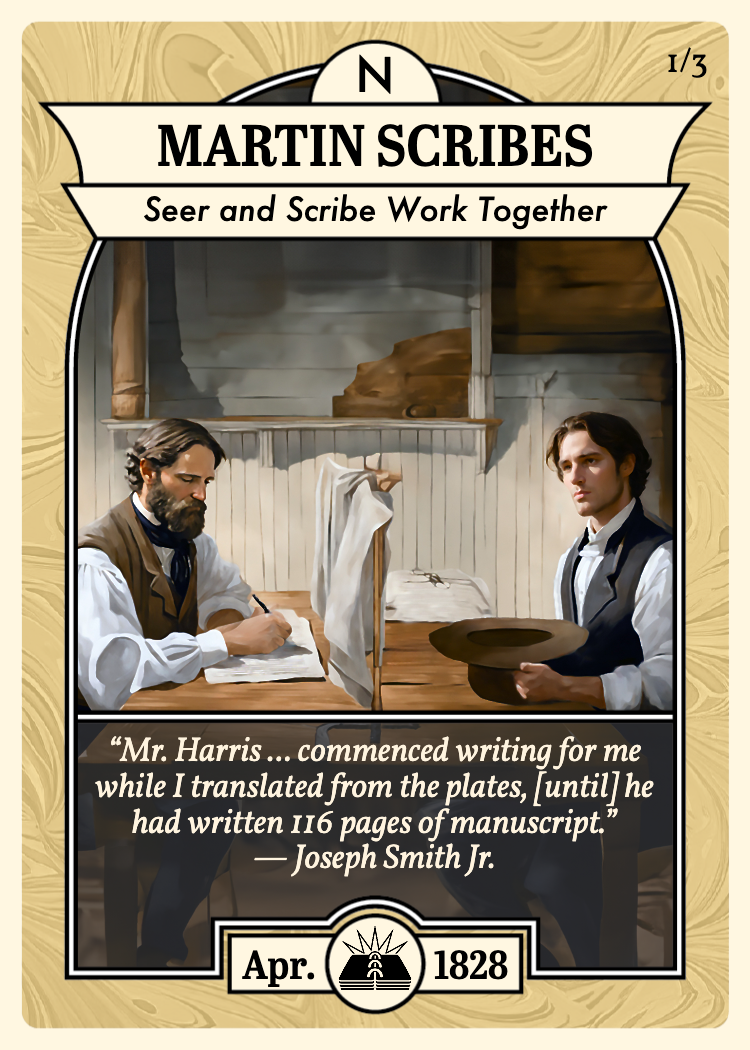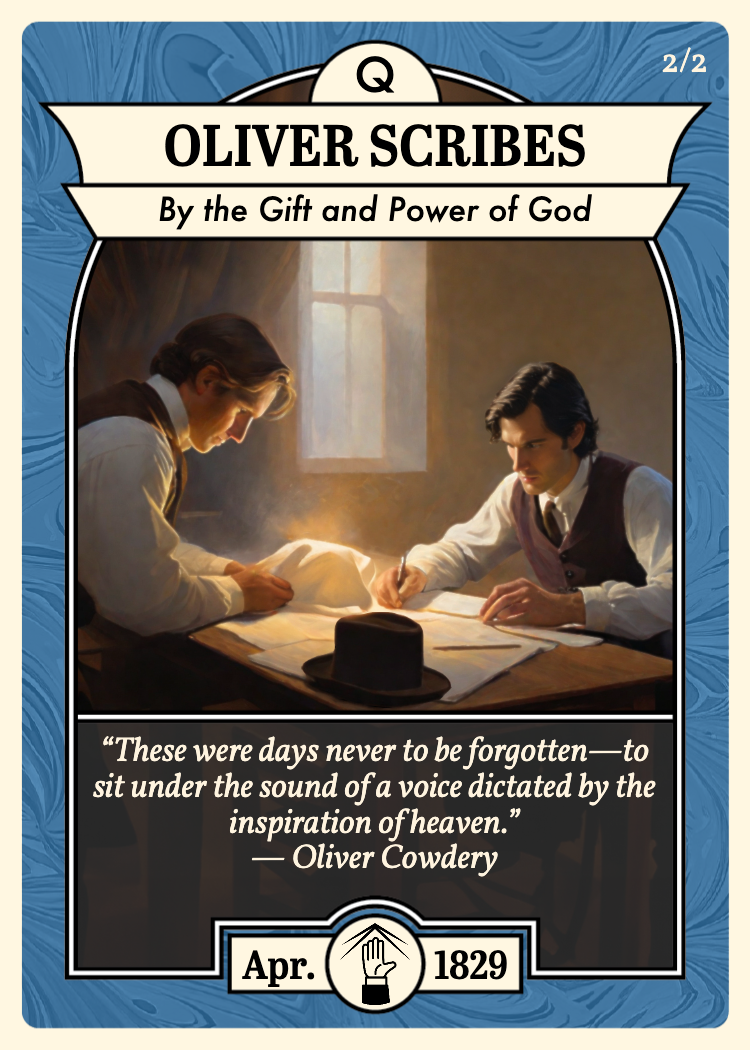The translation of the Book of Mormon took incredible dedication—and resulted in a nearly 500-page manuscript. But while Joseph Smith led the process, he didn’t work alone. Several people served as scribes, each helping to bring the record to life.
Emma Smith: The First to Put Words to Paper

It started with a newlywed couple sitting at a table. Emma Smith (who even accompanied Joseph to the Hill Cumorah on the night Joseph received the plates) was her husband's first scribe.
According to Emma, Joseph “could neither write nor dictate a coherent and well-worded letter,” and though she was present during the translation, she found the work "a marvel and a wonder." She described long hours where Joseph would dictate while Emma wrote, with the golden plates occasionally rustling with what she called a "metallic sound" when moved.
Martin Harris: The Scribe Who Lost It All

In 1828, Martin Harris, a farmer in his mid-forties, stepped in to assist. Translating at the Hale farm, Joseph and Martin would sometimes work with a curtain between them—Joseph on one side with the ancient record, Martin on the other, ready to scribe.
Using either the Urim and Thummim or a seer stone, Joseph would dictate the translation while Martin wrote. They managed to produce 116 pages of the manuscript . . . until things went sideways. Under pressure from his skeptical wife, Lucy, Martin took the pages home—where they were lost, never to be seen again.
Despite the loss, Harris remained committed. He made many personal sacrifices, including mortgaging his farm to fund the first printing of the Book of Mormon.
Oliver Cowdery: The One Who Saw It Through

The Book of Mormon we have today largely came through the teamwork of Joseph Smith and Oliver Cowdery.
Oliver was working as a teacher near Palmyra when he heard the story of Joseph Smith, his visions, and the golden plates. After speaking with the Smith family and having his own spiritual experiences, he traveled to Harmony to offer his help.
Joseph’s method was simple but unusual. He would place the Urim and Thummim or a seer stone in a hat and pull it close to his face to block out any light. Then he'd read out the words that appeared, while Oliver wrote them down. There were no reference materials—just the stone, the plates, Joseph’s voice, and the scribe’s scribbled words.
The work moved quickly. Most of the translation wrapped up in less than 90 days at the Whitmer farm in Fayette, New York. The speed, along with the consistency of the text, left a lasting impression on those involved.
From Emma's first written words to Oliver's final punctuation mark, each scribe became more than just a note-taker. Each gave their time and effort, becoming witnesses to an event that shaped religious history and playing their role in preserving the Book of Mormon.
BONUS TRIVIA:
(Answers in footnotes)
How did Emma examine the gold plates while assisting Joseph? [1]
A. She examined the engravings B. She felt the edges of the plates through a cloth C. She hefted the plates D. She touched the plates
What happened to the first 116 pages of the translation of the Book of Mormon?[2]
A. They were destroyed in a fire B. Oliver Cowdery lost them C. Martin Harris lost them D. Joseph discarded them
Where did Joseph and Oliver complete most of the translation of the Book of Mormon? [3]
A. Harmony, Pennsylvania B. Palmyra, New York C. Fayette, New York D. Kirtland, Ohio


